In the article, it is discussed that the benefits of using a corrugated roll forming machine for sale is that they are cost-effective and efficient. In addition, they are capable of producing a variety of products with high quality at a quick speed.
What is a corrugated roll forming machine?
The corrugated roll forming machine for sale is a type of manufacturing equipment that is used to create sheets from rolls of material. This machine is used in a variety of industries, including the production of packaging and boxes, automotive parts, and other industrial products.
This machine works by taking the rolls of material and pressing them into a tight, corrugated shape. This process can often be automated, which allows businesses to quickly create large quantities of customized products. Additionally, this machine is often versatile enough to handle a variety of materials, making it an optimal option for businesses looking for cost-effective manufacturing options.
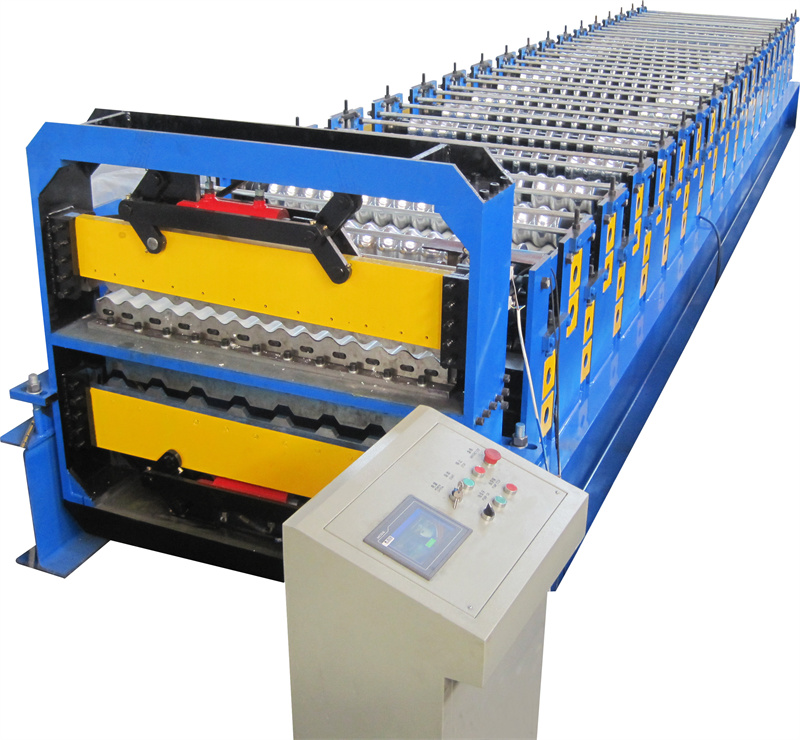
Types of corrugated roll forming machines
There are many types of corrugated रोल बनाना machine for sale on the market today, each with its own set of benefits. Here are a few of the most popular:
- Horizontal Roll Forming Machines: These machines form corrugated boards by rolling sheets of paper between two parallel metal plates. They’re typically faster and more efficient than other types of machines, and they’re used in industries such as printing and packaging where quick turnaround times are key.
- Vertical Roll Forming Machines: These machines work similarly to horizontal roll forming machines, but instead of forming sheets of paper, they form tubes or rods. They’re typically used for products that need to be tightly folded or shaped, such as boxes and cigarettes.
- Corrugated Container Making Machines: These machines are specifically designed for making corrugated containers out of plastic sheet material. They use a number of different mechanisms to shape the plastic into tight rolls, which results in durable and attractive containers that can be used in a variety of applications.
-
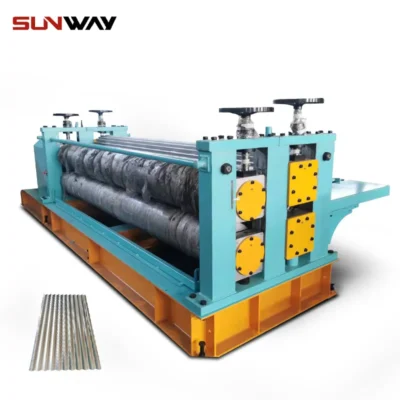 बैरल नालीदार रोल बनाने की मशीन
बैरल नालीदार रोल बनाने की मशीन -
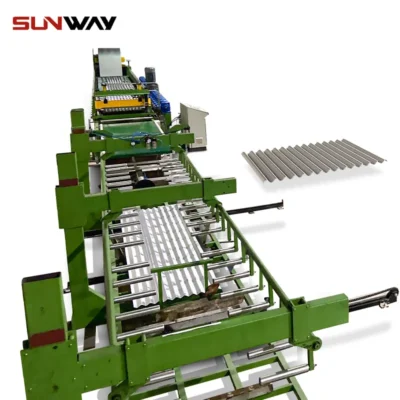 नालीदार पैनल रोल बनाने की मशीन
नालीदार पैनल रोल बनाने की मशीन -
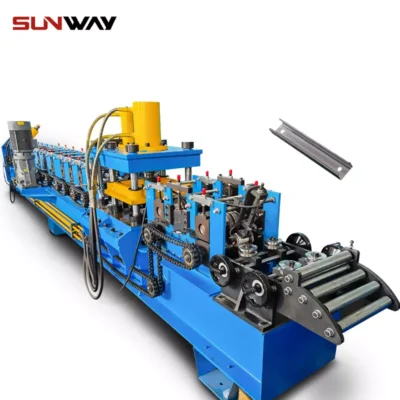 सी सेक्शन ब्रेसिंग ओमेगा स्टोरेज रैक अपराइट पोस्ट रोल बनाने की मशीन
सी सेक्शन ब्रेसिंग ओमेगा स्टोरेज रैक अपराइट पोस्ट रोल बनाने की मशीन -
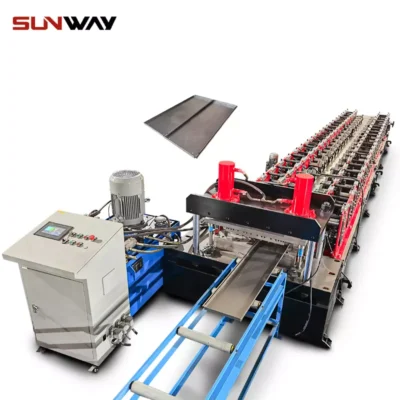 स्टील बॉक्स प्लेट रोल बनाने की मशीन बनाना
स्टील बॉक्स प्लेट रोल बनाने की मशीन बनाना -
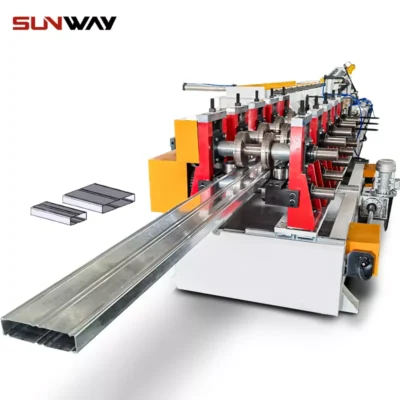 शेल्फ कॉलम के लिए बॉक्स बीम स्टील रोल बनाने की मशीन
शेल्फ कॉलम के लिए बॉक्स बीम स्टील रोल बनाने की मशीन -
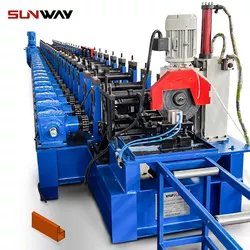 पैलेट रैकिंग स्टेप बीम पी बीम रोल बनाने की मशीन
पैलेट रैकिंग स्टेप बीम पी बीम रोल बनाने की मशीन -
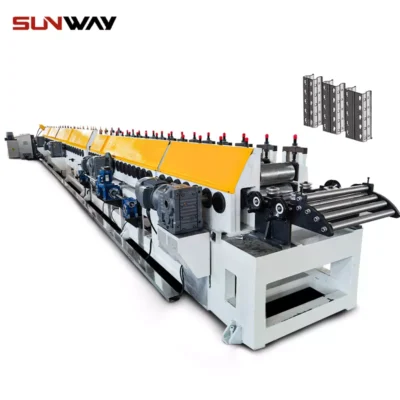 गोदाम शेल्फ ईमानदार रोल बनाने की मशीन
गोदाम शेल्फ ईमानदार रोल बनाने की मशीन -
 नालीदार रोल बनाने की मशीन
नालीदार रोल बनाने की मशीन -
 बैरल नालीदार रोल बनाने की मशीन
बैरल नालीदार रोल बनाने की मशीन
Benefits of using a corrugated roll forming machine
The corrugated roll forming machine for sale is an innovation in manufacturing and can help companies save time and money. By using this machine, businesses can create custom rolls quickly and easily. Additionally, the corrugated roll forming machine can produce high-quality products that are resistant to wear and tear. This makes it a valuable tool for businesses that need to keep products in stock.
Another benefit of the corrugated roll forming machine is its ability to create customized rolls. With this machine, businesses can create rolls that are specific to their needs. For example, a business may want to create rolls with specific dimensions or shapes. This capability allows businesses to save time and money by not having to make the same type of roll multiple times.
In addition to its many benefits, the corrugated roll forming machine is easy to use. This means that even inexperienced employees can operate it safely. Moreover, the machine does not require a lot of space, which makes it ideal for small businesses.
How the corrugated roll forming machine can help you in your business?
When it comes to manufacturing, there are a few different ways that you can go about it. However, one of the most common and efficient methods is through the use of machines. One such machine is the corrugated roll forming machine. This particular machine is specifically designed for the purpose of making corrugated cardboard boxes and other similar products.
The first thing that you need to do in order to get started using this machine is to choose which type of material you would like to create your product from. This can be anything from paper to plastic, and even metal if you so choose. Once you have chosen your material, you will then need to determine how many rolls of material you would like to produce. Finally, it is important to understand what types of cuts will be necessary on the product in order for it to fit properly into a consumer’s hand or onto a shelf.
Overall, the corrugated roll forming machine for sale is a great way for businesses of all sizes to create products quickly and easily without having to worry about any delicate cutting or assembly tasks. With proper planning and implementation, this machine can help your business grow at an incredible rate!

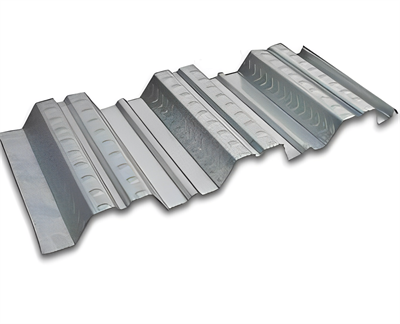
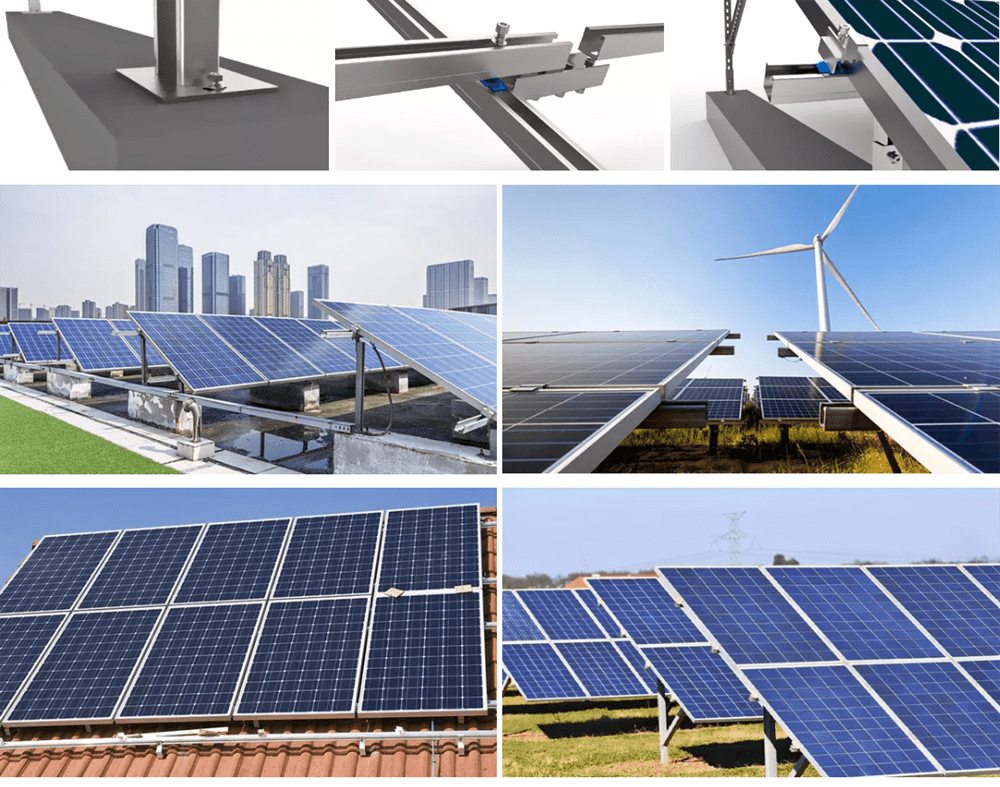
Applications For The Corrugated Roll Forming Machine
Corrugated roll forming machines are versatile and efficient tools that can be used in a variety of businesses. Here are just a few examples:
Packaging: The corrugated roll forming machine is perfect for creating custom packaging products. This machine can create boxes, sacks, and other similar products quickly and easily.
Printing: The corrugated roll forming machine for sale can also be used to create printed materials, such as brochures and flyers. This machine is very fast and efficient, making it perfect for small businesses that need to produce a lot of material quickly.
T-Shirts: The corrugated roll forming machine can also be used to create t-shirts quickly and easily. This machine is great for small businesses that need to produce large quantities of t-shirts quickly and cheaply.
निष्कर्ष
If you’re looking for a way to create custom corrugated packaging, a corrugated roll forming machine for sale may be the perfect solution for you. Not only is this process quick and easy, but it also results in high-quality packaging that looks professional and can withstand the wear and tear of shipping. If you’re interested in learning more about how a roll forming machine can benefit your business, be sure to check out our blog post on the subject.
Additional Frequently Asked Questions (FAQ)
1) What materials and thicknesses can a Corrugated Roll Forming Machine handle?
Most machines process galvanized steel, Galvalume, aluminum, and pre-painted coils from 0.25–1.0 mm (0.010–0.040 in). Roofing/panel lines commonly run 0.35–0.8 mm.
2) What production speed and tolerances are typical in 2025?
Commercial lines achieve 25–60 m/min with cut-length tolerance of ±0.5–1.0 mm using encoder/laser measurement and servo flying cutoffs.
3) How does coil quality impact corrugated panel quality?
Coil flatness, coating uniformity, and yield strength consistency directly affect panel straightness, oil-canning, and coating integrity. Specify coils to ASTM A653/EN 10346 with certificate of analysis.
4) What’s the difference between roof/wall corrugation profiles and deep-corrugated structural panels?
Roof/wall profiles have shallower sinus or trapezoidal waves for lightweight cladding; deep-corrugated profiles have higher rib depth for stiffness in industrial or structural applications.
5) What should be included in a Factory Acceptance Test (FAT) for a corrugated roll former for sale?
- Demonstrated speed at target gauge and profile
- Cut-length capability on 50+ parts (report Cp/Cpk)
- Edge waviness and camber checks
- Coating damage test on pre-painted coils
- Safety interlocks/E-stop validation and documentation
2025 Industry Trends for Corrugated Roll Forming Machines
- Faster changeovers: Recipe-driven roll-gap and guide adjustments reduce profile/gauge changeover to 5–12 minutes for multi-profile lines.
- Inline quality assurance: Vision systems verify pitch, rib height, and coating defects; laser camber/flatness monitoring reduces downstream rework.
- Energy-smart drives: Regenerative VFDs and hydraulic-on-demand packages cut energy intensity 10–20% vs. 2023 baselines.
- Traceability by default: OPC UA connectivity enables OEE dashboards, coil-to-batch traceability, and predictive maintenance via vibration/thermal sensors.
- Material optimization: Wider use of higher-yield coated steels (350–550 MPa) allows thinner gauges without sacrificing performance, saving 6–12% material.
2024–2025 Benchmarks and Buying Indicators
| KPI | 2024 Typical | 2025 Best-in-Class | Why it matters | Sources |
|---|---|---|---|---|
| Line speed (0.4–0.7 mm) | 25–45 m/min | 50–80 m/min | Throughput for roofing/cladding lines | OEM catalogs; The Fabricator |
| Changeover (profile/gauge) | 20–40 min | 5–12 min | Uptime on high-mix SKUs | OEM datasheets; integrator reports |
| Cut-length tolerance (±) | 1.0–1.5 mm | 0.5–1.0 mm | Fit, reduced scrap | Inline metrology vendors |
| Coating damage rate | 1.5–3.0% | <0.8% | Rework reduction | Coater/OEM QA notes |
| Energy use (kWh/ton) | 100–140 | 85–110 | OpEx, CO2e | U.S. DOE AMO guidance |
| Installed price (USD) | $60k–$150k | $85k–$200k | Budgeting | 2025 industry quotes |
Authoritative references:
- ASTM A653/A792 (galvanized/Galvalume): https://www.astm.org
- EN 10346 (continuously coated steel): https://standards.cen.eu
- AISI Cold-Formed Steel resources: https://www.buildusingsteel.org
- U.S. DOE Advanced Manufacturing Office: https://www.energy.gov/eere/amo
- OPC Foundation (OPC UA): https://opcfoundation.org
- The Fabricator (roll forming best practices): https://www.thefabricator.com
Latest Research Cases
Case Study 1: Inline Vision Reduces Rework on Pre-Painted Corrugated Panels (2025)
Background: Regional roofing supplier experienced coating scuffs and pitch variation on color-coated coils at 40 m/min.
Solution: Added inline vision for rib pitch and coating defect detection, micro-spray lubrication, and servo flying cutoff with laser length encoder.
Results: Coating damage rate dropped from 2.1% to 0.6%; length Cpk improved from 1.0 to 1.6; annual scrap savings ~$92k; changeover time reduced from 24 to 10 minutes.
Case Study 2: Energy-Optimized Drive Train on Legacy Corrugation Line (2024)
Background: Plant’s 15-year-old line had high kWh/ton and frequent hydraulic overheating during summer peaks.
Solution: Retrofitted regenerative VFDs, hydraulic on-demand power unit, and predictive maintenance sensors (vibration/temperature) tied to an OPC UA gateway.
Results: Energy intensity decreased 15%; unplanned downtime −22%; maintenance costs −12% year-over-year; 14-month payback.
Expert Opinions
- Phil Paxton, President, The Bradbury Group
Key viewpoint: “For corrugated panel producers, a servo flying cutoff combined with recipe-driven roll-gap yields the fastest ROI by raising speed without sacrificing cut accuracy.”
Company: https://www.bradburygroup.com - Jennifer Kinder, Director of Product Management, Samco Machinery
Key viewpoint: “Standardize supplier quotes by gauge, speed, tolerance, and coating handling—otherwise Corrugated Roll Forming Machine comparisons are apples to oranges.”
Company: https://www.samco-machinery.com - Dr. Benjamin Schafer, Professor of Civil Engineering, Johns Hopkins University
Key viewpoint: “Consistent corrugation geometry improves sheet stiffness and reduces oil-canning, which is critical for façade performance.”
Profile: https://engineering.jhu.edu
Practical Tools/Resources
- Standards and materials
- ASTM A653/A792, EN 10346 material specs: https://www.astm.org | https://standards.cen.eu
- AISI cold-formed design resources: https://www.buildusingsteel.org
- Operations and quality
- NIST SPC/process capability guides: https://www.nist.gov/manufacturing
- DOE AMO motor/drive efficiency tools: https://www.energy.gov/eere/amo
- Connectivity and data
- OPC UA implementation for machinery: https://opcfoundation.org
- Industry media/OEM discovery
- The Fabricator (process articles): https://www.thefabricator.com
- Precision Metalforming Association directory: https://www.pma.org
- Representative OEMs for corrugated lines: The Bradbury Group, Samco Machinery, Dallan, Formtek
Last updated: 2025-10-22
Changelog: Added 5 FAQs; inserted 2025 trends with benchmark table and sources; provided two recent case studies; compiled expert opinions; listed practical tools/resources tailored to Corrugated Roll Forming Machine buyers/operators
Next review date & triggers: 2026-04-22 or earlier if ASTM/EN standards update, OEM catalogs change speed/price ranges ±10%, or new case data shifts best-in-class KPIs by >10%
